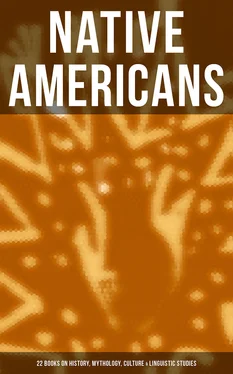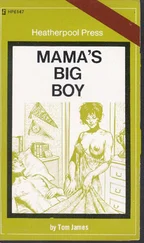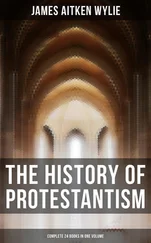The fact that the custom is found among tribes so widely separated will justify a description of those events which came under my own observation. There was a native of Padli by the name of Padlu. He had induced the wife of a Cumberland Sound native to desert her husband and follow him. The deserted husband, meditating revenge, cut off the upper part of the barrel of his gun so that he could conceal it under his jacket. He crossed the land and visited his friends in Padli, but before he could accomplish his intention of killing Padlu the latter shot him. When this news was reported in Qeqerten, the brother of the murdered man went to Padli to avenge the death of his brother; but he also was killed by Padlu. A third native of Cumberland Sound, who wished to avenge the death of his relatives, was also murdered by him. On account of all these outrages the natives wanted to get rid of Padlu, but yet they did not dare to attack him. When the pimain of the Akudnirmiut in Niaqonaujang learned of these events he started southward and asked every man in Padli whether Padlu should be killed. All agreed; so he went with the latter deer hunting in the upper part of Pangnirtung, northwest of Padli, and near the head of the fjord he shot Padlu in the back.
In another instance a man in Qeqerten had made himself odious. After it was agreed that he was a bad man an old man of Qeqerten, Pakaq, attacked him on board a Scottish whaler, but was prevented from killing him.
Page 594. The following performance was observed in Umanaqtuaq, on the southwestern coast of Cumberland Sound, in the winter of 1886-’87: An angakoq began his incantations in a hut after the lamps were lowered. Suddenly he jumped up and rushed out of the hut to where a mounted harpoon was standing. He threw himself upon the harpoon, which penetrated his breast and came out at the back. Three men followed him and holding the harpoon line led the angakoq, bleeding profusely, to all the huts of the village. When they arrived again at the first hut he pulled out the harpoon, lay down on the bed, and was put to sleep by the songs of another angakoq. When he awoke after a while he showed to the people that he was not hurt, although his clothing was torn and they had seen him bleeding.
Another angakoq performed a similar feat on the island Utussivik in the summer of 1887. He thrust a harpoon through his body and was led by about twenty-five men through the village. It is said that he imitated the movements and voice of a walrus while on the circuit.
Still another exhibition was witnessed by the whalers in the fall of 1886 in Umanaqtuaq. An angakoq stripped off his outer jacket and began his incantations while walking about in the village. When the men heard him, one after the other came out of his hut, each carrying his gun. After a while the angakoq descended to the beach; the men followed him, and suddenly fired a volley at him. The angakoq, of course, was not hurt, and then the women each gave him a cup of water, which he drank. Then he put on his jacket, and the performance was ended. The similarity of this performance with part of the festival which is described on pp. 605 et seq.is evident.
Page 606. The same feast was celebrated in 1886 in Umanaqtuaq, in Cumberland Sound, where all the Talirpingmiut had gathered. The witnesses of this festival describe it exactly in the same way as I described it above. One thing ought to be added, which I did not mention because it seemed to me accidental, but as it was repeated in the same way in 1886 it must have some meaning. I noticed that the Qailertetang, after having invoked the wind, hop about, making a grunting noise and accosting the people. When doing so they are attacked by the natives and killed. According to the description of the whalers they imitate sometimes deer, sometimes walrus. Perhaps this fact gave rise to Kumlien’s description of the “killing of the evil spirit of the deer.” It is remarkable that in 1883 in Qeqerten and in 1886 in Umanaqtuaq the festival was celebrated on exactly the same day, the 10th of November. This can hardly be accidental, and does not agree with the idea sometimes advanced, that the festival refers to the winter solstice. Unfortunately Hall (I, p. 528) does not give the dates of the festival in Nugumiut. On the western coast of Hudson Bay a festival in which masks were used was celebrated about the end of January, 1866 (Hall II, p. 219), but it is hardly possible to draw conclusions from Nourse’s superficial account of Hall’s observations.
Page 615. It may be of interest to learn that in 1885 and 1886 two instances of this kind occurred in Cumberland Sound. There was a very old woman in Qeqerten by the name of Qaχodloaping. She was well provided for by her relatives, but it seems that one of the most influential men in Qeqerten, Pakaq, whom I mentioned above ( p. 668) as the executioner of a murderer, deemed it right that she should die. So, although she resisted him, he took her out of her hut one day to a hill and buried her alive under stones. Another case was that of an old woman whose health had been failing for a number of years. She lived with her son, whose wife died late in the autumn of 1886. According to the religious ideas of the Eskimo, the young man had to throw away his clothing. When, later on, his mother felt as though she could not live through the winter, she insisted upon being killed, as she did not want to compel her son to cast away a second set of clothing. At last her son complied with her request. She stripped off her outside jacket and breeches, and was conveyed on a sledge to a near island, where she was left alone to die from cold and hunger. The son who took her there did not use his own sledge nor any other Eskimo sledge for this purpose, but borrowed that of the Scottish whaling station.
The “foot-note on p. 616” is note 9, ending “.... The full text will be found in the Verhandlungen der Berliner Gesellschaft für Anthropologie, Ethnologie und Urgeschichte, Berlin, 1888.”
1.Baffin-Land. Geographische Ergebnisse einer in den Jahren 1883 und 1884 ausgeführten Forschungsreise. Von Dr. Franz Boas. (Ergänzungsheft No. 80 zu »Petermanns Mitteilungen«.) Gotha: 1885.
2.A glossary of Eskimo geographic terms will be found on p. 662.
3.From a rather ambiguous statement (p. 355) it would seem that Owutta belongs to the territory of the Ugjulirmiut; but in later passages ample proof is found that it is inhabited by the Netchillirmiut (pp. 423, 427). I myself was formerly misled by the above passage (Zeitschr. Gesell. Erdk., p. 171, Berlin, 1883).
4.A glossary of the Eskimo words used throughout this paper will be found on p. 659.
5.According to the Museum catalogue, the point represented in this figure is from Victoria Island, Boothia, from Hall’s collection; however, it is a typical western arrow.
6.The fork first represented in this figure is evidently broken, a series of knobs having originally formed the handle.
7.Uqsurelik, with blubber, signifies in the language of the angakut the white bear; lauk, large; -leqdjorpoq, he provides himself with.
8.Since the above was written I learn from a paper by Mr. Lucien M. Turner that a similar feast is celebrated in Ungava Bay. (American Naturalist, August, 1887.)
9.Ititaujang means “similar to the anus.” This tradition is curtailed, as some parts were considered inappropriate for this publication. The full text will be found in the Verhandlungen der Berliner Gesellschaft für Anthropologie, Ethnologie und Urgeschichte, Berlin, 1888.
10.See foot-note on p. 616.
11.The man in the moon is the protector of orphans.
12.By a mistake of the Eskimo who made the drawings, four dogs are harnessed to the sledge. According to his own explanation the dappled one ought to be the only dog.
Читать дальше












